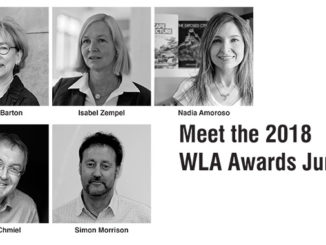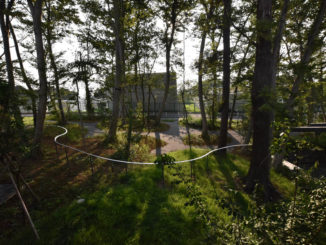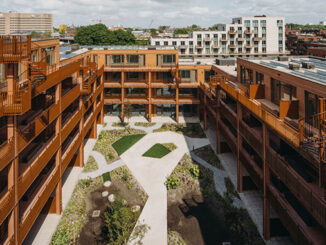Honourable Mention in the 2021 WLA Awards for the Editors’ Award
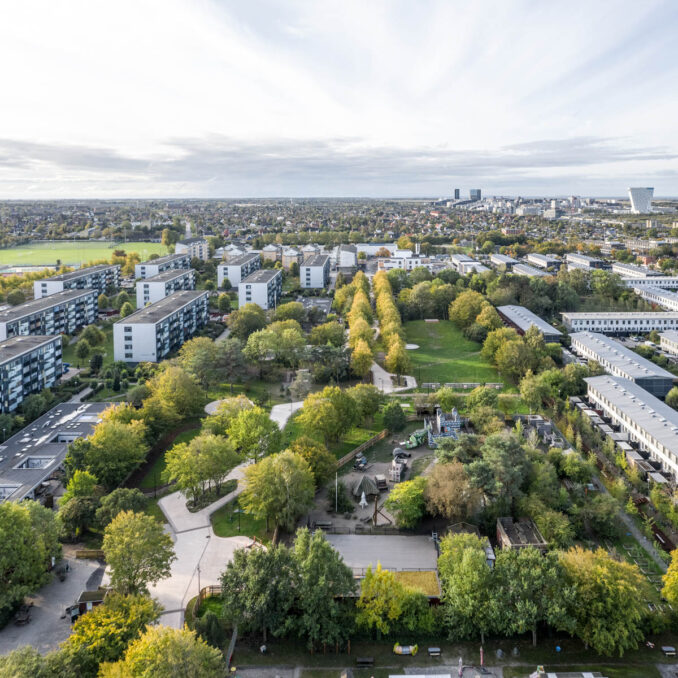
The Remise park is a green gem hidden in the centre of the housing development Urbanplanen in Copenhagen, Denmark. Between the large buildings, cherry plums, hazel and birch trees grow, and at the staffed playground, the Farm, goats graze. The Remise park is a wonderful green pocket in Copenhagen, and the goal of BOGL’s renewal project was to transform the park into a safe and attractive destination for residents at Urbanplanen and other Copenhageners.
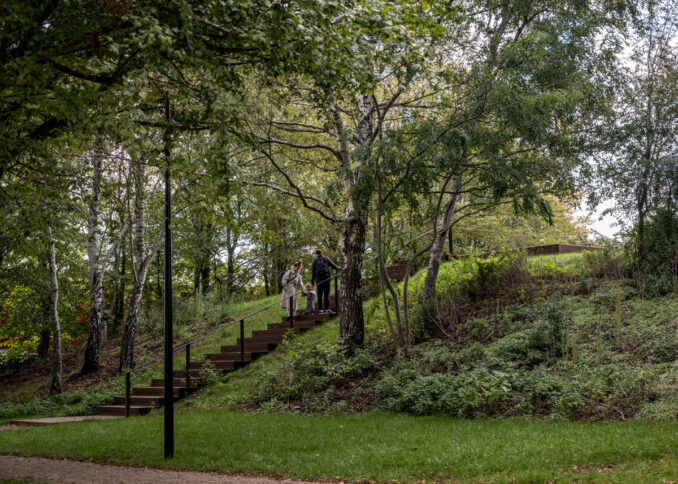
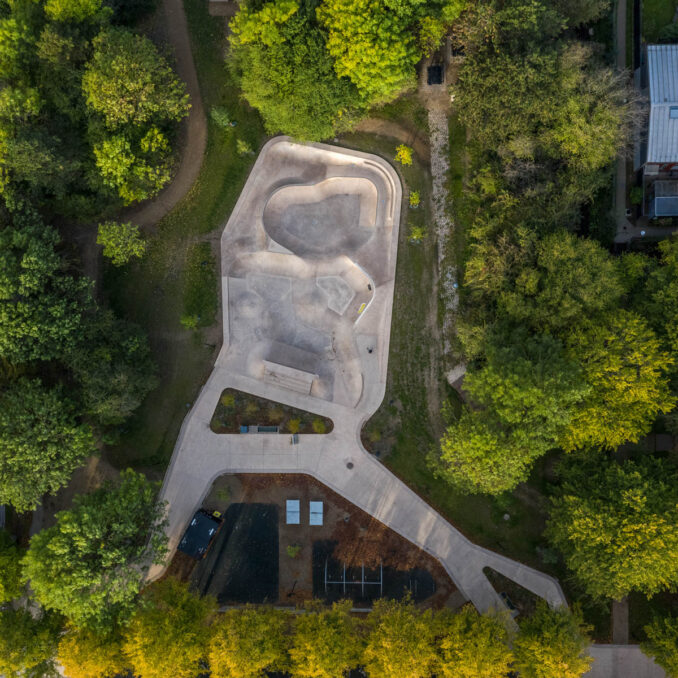
Social sustainability
The renewal of the Remise park is part of a larger local transformation effort aimed at making Urbanplanen feel safer and more secure. A key focus of the project is to tie the area together and create connections across the area while also preserving and enhancing many of the park’s existing qualities. The small allotment gardens, the DIY buildings and structures and the lush natural growth have thus been preserved, while the straight, wide tree-lined path running through the length of the park has been replaced by an activity path.

The main design approach aims to highlight and enhance the Remise park’s existing qualities and to tie the different park areas and activities together. Specifically, a new activity path connects the different sections of the park to create a higher degree of coherence. In combination with the many different types of natural spaces and moods, this gives the Remise park a new, distinct identity as a place with room for community-building, physical activity and nature experiences in an otherwise densely built-up area.
Activity path
Dynamic in form, the activity path is the main artery running through the Remise park. Its primary purpose is to create a higher degree of connectedness among the different activities, areas, and nature types in the park. The path zigzags and varies in width, in some places inviting physical activity or offering places to settle and spend time, in other places narrowing to make room for existing trees and for new connections to take shape throughout the park.
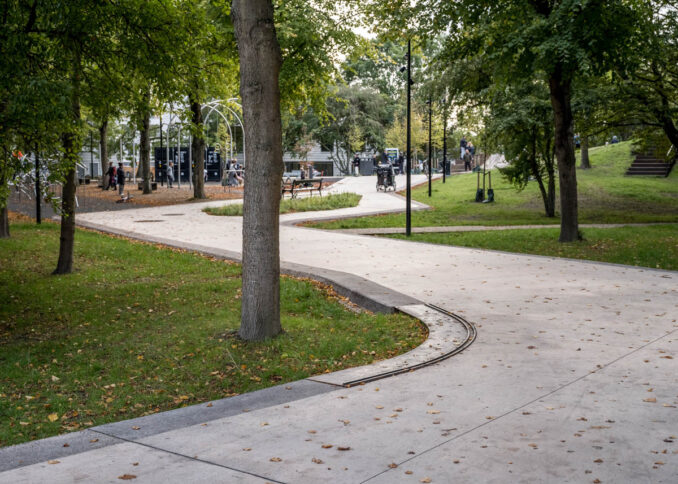
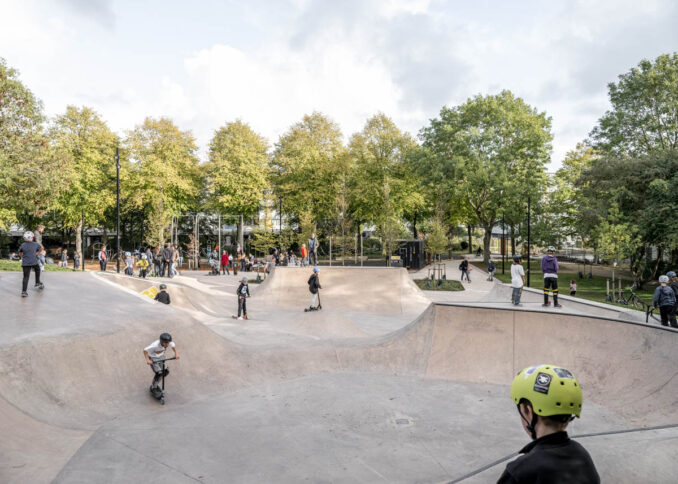
In addition to its form, a characteristic feature of the path – which is made of dyed, cast-in-place concrete – is finished with three different surfaces, depending on place and purpose. The outer edges of the path are finished with a retardation technique that allows the aggregate stones to emerge and creates a highly tactile surface with a pronounced depth effect. This type of surface defines the border of the path against the landscape, and the tactile paving acts as a guide for people with a visual impairment. Where the borders are intended to invite people to sit down, the coarse surface has a beautiful terrazzo polish that makes it pleasant to sit on. The activity path improves the connectedness between north and south and between the three types of landscapes: the cultural landscape, the active landscape, and the natural landscape. The materiality, form and colour of the path contribute to a consistent architectural expression that gives the Remise park a clear identity.
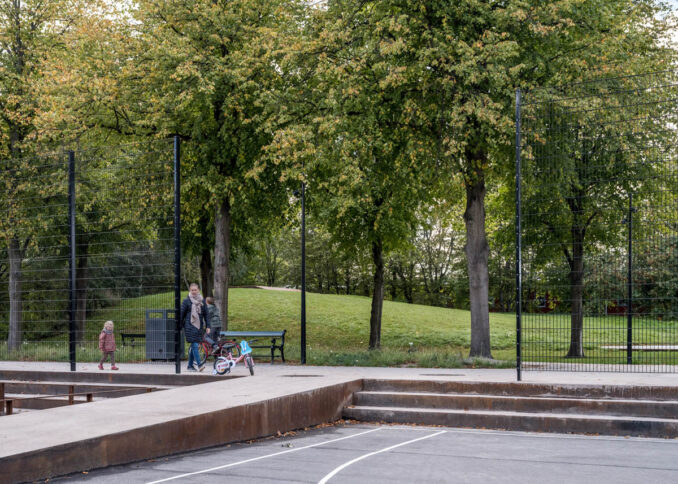
The natural landscape
The natural landscape unfolds in the south-west corner of the park, where we preserved and enhanced the woodland feel and the hilly terrain. In the low-lying section of the park, towards the housing blocks of Urbanplanen, we established an Alder Grove with more than 20 different alder species. The grove is a new natural space in the park, a quiet, intimate place with small areas that invite people to settle and linger and which also offer nature experiences. The area is designed with a particular focus on climate and biodiversity, which makes the grove a fun place to explore and a key element of local rainwater management. Footbridges and small plateaus underscore the special atmosphere and make it possible to walk in the grove, even if it is flooded after a major rain event. In addition to the Alder Grove, rainwater is collected in the wadi running along the western edge of the park.
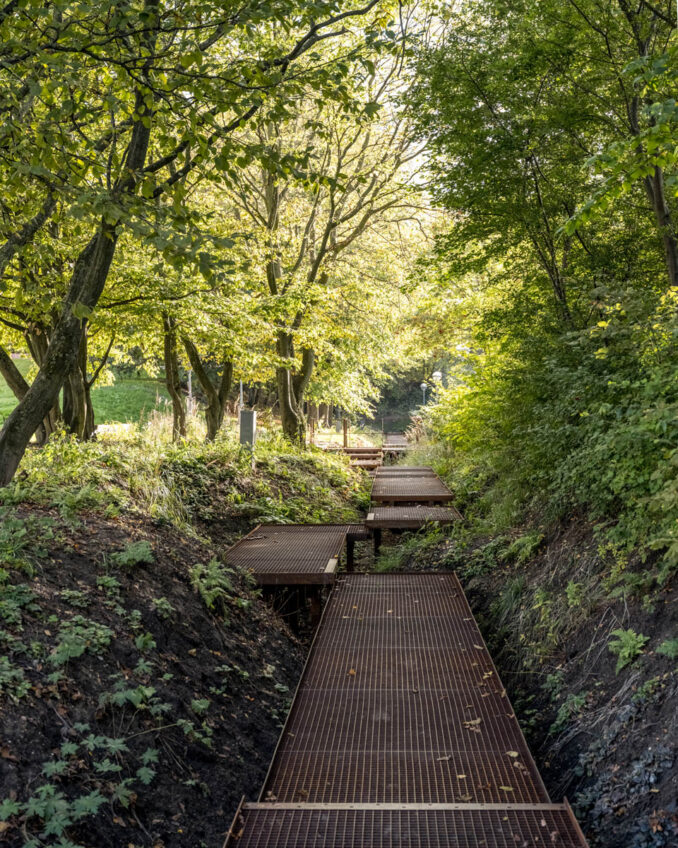
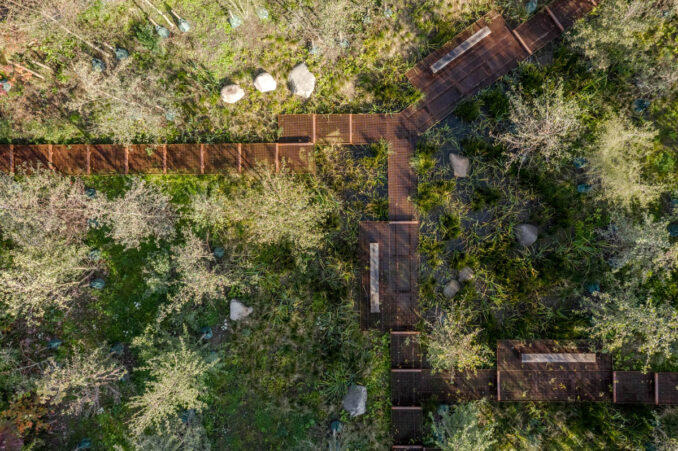
Part of the wadi is established as a large dynamic rainwater bed with ornamental grasses and perennials that can handle both dry and wet soil. The plants in the Alder Grove and in the wadi should contribute to a high degree of biodiversity and resilience. Here too, plant diversity attracts a rich selection of animals, insects, and birds.
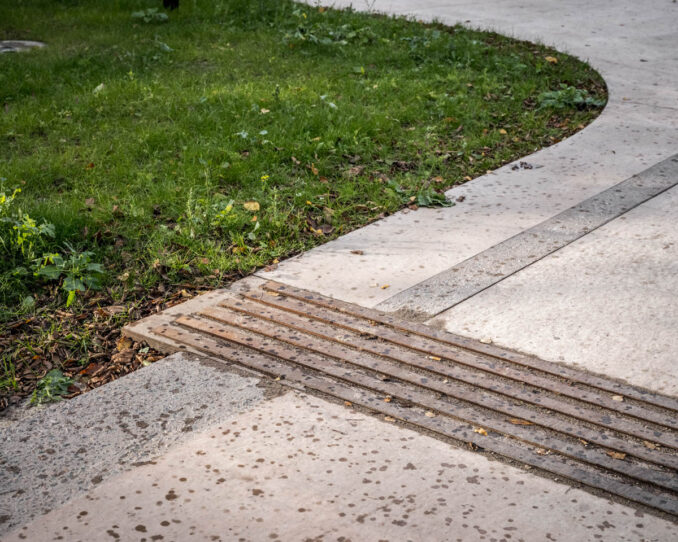
Remiseparken (The Remise Park)
Landscape architect: BOGL
Location: Peder Lykkes Vej 71, Copenhagen, Denmark
Client: City of Copenhagen
Consultants: SNE Architects (Skate park)
Photo credits: COAST STUDIO

